Discography Walkthrough: Aloha
 by James Brubaker
by James Brubaker
December 1, 2012
Aloha might be the most criminally underrated band of the last decade. Since forming, Aloha have recorded eight albums and EP’s. As recently as this past August, I heard a rumor that a ninth release might be in the early planning stages. But let’s not get ahead of ourselves—we don’t need to get greedy for maybe-someday-future songs when Aloha have already gifted us with a decade’s worth of songs to enjoy. For the purpose of this pseudo-feature, I’ll be revisiting each of Aloha’s key releases, discussing what they sound like, how they fit into the Aloha canon, and why new listeners might like them. I’ll be skipping a couple of incidental singles featuring songs that turned up on later albums, but otherwise, I’m starting on the 1999 7” and moving forward through the band’s latest LP, Home Acres.
1999 | Debut 7”
 From the beginning, Aloha was known by many as “that band with the vibraphone.” And while such a moniker hardly did justice to the band’s daring mix of indie pop, prog rock, and jazz, the label was technically accurate. Aloha’s original lineup, and the lineup that recorded this first 7”, consisted of Tony Cavallario on guitar and vocals, Matthew Gengler on bass and vocals, Eric Koltnow on vibraphone and keyboards, and Anthony Buehrer on drums.
From the beginning, Aloha was known by many as “that band with the vibraphone.” And while such a moniker hardly did justice to the band’s daring mix of indie pop, prog rock, and jazz, the label was technically accurate. Aloha’s original lineup, and the lineup that recorded this first 7”, consisted of Tony Cavallario on guitar and vocals, Matthew Gengler on bass and vocals, Eric Koltnow on vibraphone and keyboards, and Anthony Buehrer on drums.
These three songs sound like a band just getting started—they are rough around the edges but full of an impressive punk energy. The 7” leads off with “Once More with Feeling,” built around a melodic series of builds, breaks, and background screams. Unfortunately, the recorded version of this song doesn’t live up to Aloha’s live rendition, which found Gengler, his back to the audience, screaming over the breakdown while Cavallario sang the pretty parts. The screams are intact but muted on the 7”. “Summer of the Breakup” is a pleasant enough, though oddly disjointed track featuring some nice guitar/vibraphone call and response. Finally, “Lub Dub Da,” which gets side two to itself, is Aloha’s first big anthem. The song showcases Aloha’s early predilection toward technically demanding arrangements as it is loaded with starts, stops, and Koltnow’s shimmering runs up and down the vibraphone’s keys.
1999 | “Warsaw” (on A Compilation for Heroes)
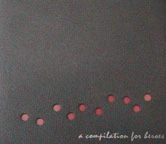 I debated whether or not to list “Warsaw” here. It’s probably Aloha’s least heard, officially released song. Or, I don’t know, it was later re-issued on one of those free Polyvinyl compilation CD’s that they include with every damn order, so maybe “Warsaw” is one of Aloha’s most heard songs. I mention it here for a few reasons: first, it is the only officially released Aloha song that features Matt Gengler singing something resembling a lead vocal; second, it comes closer than any of the band’s other records to representing the excitement of Aloha’s early live show; third, I think it’s about Marie Curie, and that’s pretty awesome; and fourth, as far as I can tell, “Warsaw” was the first song Aloha released featuring their new (as of late 1998 or early 1999) drummer, Cale Parks. There are plenty of Aloha songs I prefer to “Warsaw,” but this song’s loping bass groove, energetic vocals (the parts where Gengler and Cavallario sing just out of unison are stunning), and raucous interplay between drums and vibraphone make it one of the most exciting songs in Aloha’s catalog.
I debated whether or not to list “Warsaw” here. It’s probably Aloha’s least heard, officially released song. Or, I don’t know, it was later re-issued on one of those free Polyvinyl compilation CD’s that they include with every damn order, so maybe “Warsaw” is one of Aloha’s most heard songs. I mention it here for a few reasons: first, it is the only officially released Aloha song that features Matt Gengler singing something resembling a lead vocal; second, it comes closer than any of the band’s other records to representing the excitement of Aloha’s early live show; third, I think it’s about Marie Curie, and that’s pretty awesome; and fourth, as far as I can tell, “Warsaw” was the first song Aloha released featuring their new (as of late 1998 or early 1999) drummer, Cale Parks. There are plenty of Aloha songs I prefer to “Warsaw,” but this song’s loping bass groove, energetic vocals (the parts where Gengler and Cavallario sing just out of unison are stunning), and raucous interplay between drums and vibraphone make it one of the most exciting songs in Aloha’s catalog.
Listen to “Warsaw”
1999 | The Great Communicators, The Interpreters, the Nonbelievers
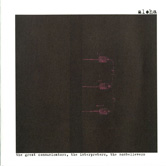 The Great Communicators… was as much a reintroduction of Aloha to its fans as it was a first introduction for new-comers. Even though Cale Parks played on “Warsaw” and had been drumming with Aloha live for the better part of a year by the time The Great Communicators… was released, this EP was the first time Aloha was able to put all the pieces together on record. EP opener “The Sound Between,” begins with a big bass riff that gives way to odd percussive noodling, over which Cavallario sings some lyrics that may or may not be about masturbation: “A boy and his veins prepare for peace, poised to thrust a thousand drops.” When the rest of the band kicks in, the song sways with a slow bounce and eventually fades directly into the EP’s second, and perhaps strongest, track, “Roanoke Born.” The song’s jangly guitars, vibraphone arpeggios, playful structure, and nostalgic lyrics (“You were born in Roanoke. We tore paths through milkweed, sand dunes, plane wrecks to this spot where hair blows innocence and endless summers”), would become a template for Aloha’s best work.
The Great Communicators… was as much a reintroduction of Aloha to its fans as it was a first introduction for new-comers. Even though Cale Parks played on “Warsaw” and had been drumming with Aloha live for the better part of a year by the time The Great Communicators… was released, this EP was the first time Aloha was able to put all the pieces together on record. EP opener “The Sound Between,” begins with a big bass riff that gives way to odd percussive noodling, over which Cavallario sings some lyrics that may or may not be about masturbation: “A boy and his veins prepare for peace, poised to thrust a thousand drops.” When the rest of the band kicks in, the song sways with a slow bounce and eventually fades directly into the EP’s second, and perhaps strongest, track, “Roanoke Born.” The song’s jangly guitars, vibraphone arpeggios, playful structure, and nostalgic lyrics (“You were born in Roanoke. We tore paths through milkweed, sand dunes, plane wrecks to this spot where hair blows innocence and endless summers”), would become a template for Aloha’s best work.
The Great Communicators… is rounded out by the slight and woozy “Gary’s Narrator,” the synth-heavy anthem “I Never Use the Shoreway,” and a keyboards and break-beats piece called “Ayahuasca at Dawn.” With The Great Communicators… Aloha established their reputation for being a forward-thinking rock band who fit alongside contemporaries like Tortoise and The Sea and Cake, while simultaneously embracing the melodicism and lyricism of mid-period “emo” acts like Sunny Day Real Estate and Mineral. But Aloha’s nods to their peers were just that—nods. Aloha had quickly established their own identity, and it wasn’t long before they had the chance to let that identity flourish.
Listen to “I Never Use the Shoreway”
2000 | That’s Your Fire
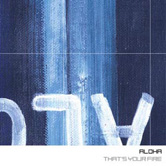 Though That’s Your Fire might not be Aloha’s “best” album, it is certainly my favorite. From the opening drums—picking up right where The Great Communicators…left off—to the closing vibraphone chimes, That’s Your Fire is Aloha’s most urgent, energetic album. Aloha’s next album, Sugar, would be a more refined take on a similar formula, and Some Echoes would, much later, become the band’s tightest and most polished album, but That’s Your Fire manages to sound both polished and raw. All of the performances are precise, but when brought together they butt up against each other creating some thrilling tensions—check out the stutter-step bass and drum kicks underlying “Ferocious Love,” the sloppy but perfect segues from free-form verses to pure-pop choruses on “Saint Lorraine,” or the fantastic full band runs that close “With the Lights Out We Sing.”
Though That’s Your Fire might not be Aloha’s “best” album, it is certainly my favorite. From the opening drums—picking up right where The Great Communicators…left off—to the closing vibraphone chimes, That’s Your Fire is Aloha’s most urgent, energetic album. Aloha’s next album, Sugar, would be a more refined take on a similar formula, and Some Echoes would, much later, become the band’s tightest and most polished album, but That’s Your Fire manages to sound both polished and raw. All of the performances are precise, but when brought together they butt up against each other creating some thrilling tensions—check out the stutter-step bass and drum kicks underlying “Ferocious Love,” the sloppy but perfect segues from free-form verses to pure-pop choruses on “Saint Lorraine,” or the fantastic full band runs that close “With the Lights Out We Sing.”
Also on That’s Your Fire, we begin to hear hints of Aloha’s prog-rock influences in the time-signature shifts and layered vocals on “Last Night I Dream You Slept Beside Me,” and the previously mentioned arppegiated runs that close “With the Lights Out We Sing.” That’s Your Fire also demonstrates Aloha’s penchant for ballads with the ethereal “Don’t Sleep,” and the simple but touching “There, There.” Then, of course, there were the album’s anthems: “Liberty,” “Sky High,” “A Hundred Stories,” and “Heading East”—these are Aloha’s bread and butter, songs built entirely around forward movement and soaring moments of melodic clarity. That’s Your Fire’s balance between the ballads, experiments, and anthems is perfect. This balance, coupled with the subtle but effective connective tissue between each song finds That’s Your Fire playing as a fully realized, beautifully arranged and sequenced album. Upon reaching the end of album closer “Sky High,” which functions as a prolonged, elegant, slow-motion build, it’s hard not to be a little bit in awe of the song’s barely-controlled burn, and simple, but precise lyrics (“When she stains your clothes remember the night and walk a little slower towards the flow of her words.”).
Listen to “A Hundred Stories”
2002 | Sugar
 The songs on Sugar are more refined than anything Aloha had previously released. On songs like “Let Your Head Hang Low,” a low key, folk influenced number, and “Protest Song,” a fuzzy, funky bit of space-pop, we can hear Aloha stretching beyond the sonic expectations they’d previously set for themselves. Elsewhere, as on “Balling Phase,” and “It Won’t Be Long,” Aloha play to their strengths—the first is a big anthem, full of starts, stops, and big fills, and the later is an urgent but understated tune that plays like a clinic in how to successfully layer sonic textures.
The songs on Sugar are more refined than anything Aloha had previously released. On songs like “Let Your Head Hang Low,” a low key, folk influenced number, and “Protest Song,” a fuzzy, funky bit of space-pop, we can hear Aloha stretching beyond the sonic expectations they’d previously set for themselves. Elsewhere, as on “Balling Phase,” and “It Won’t Be Long,” Aloha play to their strengths—the first is a big anthem, full of starts, stops, and big fills, and the later is an urgent but understated tune that plays like a clinic in how to successfully layer sonic textures.
The only things keeping Sugar from perfection are “Thieves All Around Us,” and “Dissolving,” two songs that work tremendously well on their own (in fact, ”Thieves” is one of my very favorite Aloha songs), but as back-to-back lead-ins to the album’s closing act, these mid-tempo numbers get lost in the shuffle. That being said, “I Wish No Chains Upon You,” a lovely little electric piano ballad with a wild psychedelic outro, and huger-than-huge album closer “We Get Down,” provide an outstanding finish to Sugar. “We Get Down” easily stands as one of Aloha’s finest moments, infusing a bit of swing into Aloha’s customary builds and breakdowns. When the drums and bass drop out of the mix to setup the song’s final, climactic build, and Cavallario sings “If I could, I’d make up a world as foggy as I feel and tender as a nerve,” it is clear that with “We Get Down,” Aloha have reached their own first climax as a band—the intensity of the performances on the song, and across Sugar, coupled with Cavallario’s quirky but heartfelt lyrics culminate in an oddly perfect moment, laced with romance and danger.
Check out a live, acoustic performance of “Let Your Head Hang Low”
2004 | Here Comes Everyone
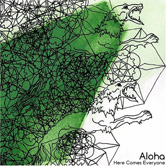 Two and a half years after Sugar, Aloha returned with Here Comes Everyone. This album found the band facing their biggest personnel change since adding Cale Parks five years earlier. Eric Koltnow was out as vibraphone player and knob twiddler, and multi-instrumentalist T.J. Lipple was in. This personnel change fundamentally altered Aloha’s sound. Gone were the wide-open arrangements, with chasms filled by roving keyboards and ringing vibraphone notes, and alchemic interplay between instruments—the songs on Here Comes Everyone felt more like meticulously arranged compositions and less like ideas brought to life by a group of talented musicians.
Two and a half years after Sugar, Aloha returned with Here Comes Everyone. This album found the band facing their biggest personnel change since adding Cale Parks five years earlier. Eric Koltnow was out as vibraphone player and knob twiddler, and multi-instrumentalist T.J. Lipple was in. This personnel change fundamentally altered Aloha’s sound. Gone were the wide-open arrangements, with chasms filled by roving keyboards and ringing vibraphone notes, and alchemic interplay between instruments—the songs on Here Comes Everyone felt more like meticulously arranged compositions and less like ideas brought to life by a group of talented musicians.
This, Aloha’s third album, is my least favorite of the band’s full length releases, not because the band’s sound changed, but because the new sound just doesn’t quite work—yet. That being said, the album has a number of excellent songs: album opener “All the Wars,” is a propulsive chunk of vaguely funky indie pop; “Summer Away,” is a catchy, Police-inspired guitar rocker; “Boys in the Bathtub” shapes its big beats and electric piano into a top-shelf Aloha anthem; and “Water Your Hands” is a weird, Kafka-esque move towards the band’s prog-rock roots. But for all of the album’s great moments, a slew of nice-enough, but non-descript low-to-mid tempo numbers (“Be Near,” “I Don’t Know What Else to Do,” and “Setting Up Shop,”) weigh down the back half. Even the album’s closing tracks, “Perry Como Gold” and “Goodbye to the Factory,” lack the usual Aloha spark. Despite the finer moments on Here Comes Everyone, the album suffers, not from Aloha changing their sound, but from their inability to feel comfortable within that new sound.
Watch Aloha perform “Boys in the Bathtub”
2006 | Some Echoes
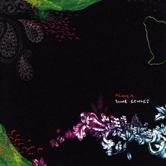 Some Echoes is a great album. After the somewhat disappointing—by Aloha’s standards—Here Comes Everyone, Aloha found a way to make their new, streamlined approach to song-craft work. While Here Comes Everyone felt a bit uncomfortable, Some Echoes finds the band at its most confident. Album opener “Brace Your Face” is one of Aloha’s tightest and most exciting songs, mixing conventional indie pop with some wholly unexpected nods to prog rock. The restless, roving keyboards and vaguely Yes-esque vocals that make up the song’s final third are inspired. Thematically, the song boils down to a plea for connection: “We’re running out of time/to capture your attention,” Cavallario sings, which leads to the song’s final lines “Come and connect me to you.” From its opening moments, Some Echoes re-grounds us in the urgency that made Aloha’s early work so compelling.
Some Echoes is a great album. After the somewhat disappointing—by Aloha’s standards—Here Comes Everyone, Aloha found a way to make their new, streamlined approach to song-craft work. While Here Comes Everyone felt a bit uncomfortable, Some Echoes finds the band at its most confident. Album opener “Brace Your Face” is one of Aloha’s tightest and most exciting songs, mixing conventional indie pop with some wholly unexpected nods to prog rock. The restless, roving keyboards and vaguely Yes-esque vocals that make up the song’s final third are inspired. Thematically, the song boils down to a plea for connection: “We’re running out of time/to capture your attention,” Cavallario sings, which leads to the song’s final lines “Come and connect me to you.” From its opening moments, Some Echoes re-grounds us in the urgency that made Aloha’s early work so compelling.
Other highlights from Some Echoes include one of Aloha’s most unabashed diversions into pure pop bliss, “Your Eyes,” the beautifully arranged, almost electro-baroque “Between the Walls,” the immense and wild, wall-of-piano-and-synths anthem “Summer Lawn,” and another top-tier album closer, “Mountain.” On “Mountain,” Aloha embrace a pure distillation of their talent for big anthems, and the result is one of the band’s biggest songs, period. “One more layer of love is piled on/We’re making a mountain,” Cavallario sings, over quick drums and some sort of mad genius’ midnight mass of keyboards. Clocking in at just over three minutes, the song is over almost as soon as it’s begun, but those three minutes are euphoric. The end result is clear: Aloha were capturing our attention once again, connecting with us through urgency and energy.
Listen to “Summer Lawn”
2007 | Light Works
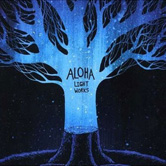 Light Works is an odd little album, clocking in at seven songs and around thirty minuts. Add to that the sense that these songs are more of an experiment than a proper follow up to Some Echoes, and Light Works ultimately feels like a detour of sorts. When the EP was first released in 2007, I was a bit underwhelmed. The songs are all mid-to-low tempo, rooted in acoustic guitars, pianos and with minimal percussion. The album hardly felt like an Aloha album.
Light Works is an odd little album, clocking in at seven songs and around thirty minuts. Add to that the sense that these songs are more of an experiment than a proper follow up to Some Echoes, and Light Works ultimately feels like a detour of sorts. When the EP was first released in 2007, I was a bit underwhelmed. The songs are all mid-to-low tempo, rooted in acoustic guitars, pianos and with minimal percussion. The album hardly felt like an Aloha album.
With time, though, Light Works grew on me. It still doesn’t feel like an Aloha album, but that’s not a good reason to dislike these songs. In fact, Light Works features some of Cavallario’s strongest compositions, a cycle of delicate, almost fragile songs focusing on mortality (“When they call my name I’m coming up with my head high and my hands full of your hands” on “The End”), memory (on “Trick Spring” a garden of dying rhododendrons become a symbol for memories that “are melting away”) and domesticity (“Our house filled with laughter/Our love will live forever,” from “Body Buzz”). What makes Light Works an essential part of the Aloha catalog is how all of these themes fluidly move from song to song, making the album about growing gracefully into adulthood. Such a subject might seem like uneasy territory for a rock band, but that’s what makes these songs special—try to imagine The Strokes making an album about growing into adulthood and appreciating the world around us. These aren’t easy songs to write. Light Works took serious guts to make, and though I wasn’t impressed when I first heard the album five years ago, I’m impressed now.
Listen to “The End”
2010 | Home Acres
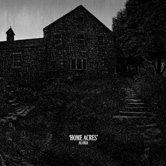 Home Acres marks a curious milestone in Aloha’s career. With the release of this album, the 2003-2010 version of Aloha lived longer than the 1998 – 2003 version of the band. As such, Home Acres feels like the first time Aloha have really been able to settle into their identity as a band. Now, maybe that doesn’t mean anything for a band who spent much of their career writing songs by sending tapes and files across half of the country, but there’s something about Home Acres, a confidence, a determination, and a sense of professionalism, that make these songs feel inevitable. The above description might sound like it’s sucking the life out of Aloha’s music, but that’s not my intent. True, there aren’t really any surprises on Home Acres, but that doesn’t mean Home Acres isn’t a great album.
Home Acres marks a curious milestone in Aloha’s career. With the release of this album, the 2003-2010 version of Aloha lived longer than the 1998 – 2003 version of the band. As such, Home Acres feels like the first time Aloha have really been able to settle into their identity as a band. Now, maybe that doesn’t mean anything for a band who spent much of their career writing songs by sending tapes and files across half of the country, but there’s something about Home Acres, a confidence, a determination, and a sense of professionalism, that make these songs feel inevitable. The above description might sound like it’s sucking the life out of Aloha’s music, but that’s not my intent. True, there aren’t really any surprises on Home Acres, but that doesn’t mean Home Acres isn’t a great album.
We hear Aloha asserting the inevitability of their songs in the pure energy coursing through the fuzzy and fast “Moonless March,” in the eerie guitars and keyboards that lift into an arena-ready chorus on “Everything Goes My Way,” in the no-frills power pop of “Blackout,” in the wistful simplicity of “I’m in Trouble,” and, as usual, in the cinematic sweep, and explosive urgency of the stunning album-closer, “Ruins.” On “Ruins,” Cavallario sings something about being “Just beyond camera, right outside the frame/Waiting for the getaway car that never came.” While the lyrics speak to an acknowledgment of artifice and a desire to escape, the big guitar chords, cascading keyboards, and throbbing bass and drums indicate a desperate embrace of living. “Ruins,” like the rest of Home Acres, is Aloha doing what they have always done best, building tightly wound, beautifully arranged songs out of elements of pop, prog-rock and whatever other spare parts happen to be lying around.
Ultimately, Home Acres shows us that Aloha still have plenty to share with music fans. In the three years between Light Works and Home Acres, I wasn’t sure we’d ever hear from the band again. We did, and the results were worth the wait. Now, it’s been more than two years since Home Acres was released and, were it not for encountering the aforementioned rumor that a new album might be in the very early planning stages, I’m not sure I’d expect to hear from them again at this point. If Home Acres ends up being Aloha’s last album, it will be a satisfying end to a strong career. That being said, let’s hope that Home Acres isn’t the end.
Checkout a live performance of “Ruins”